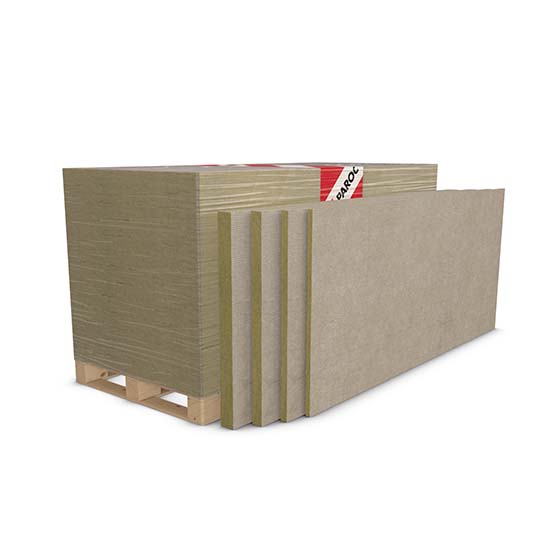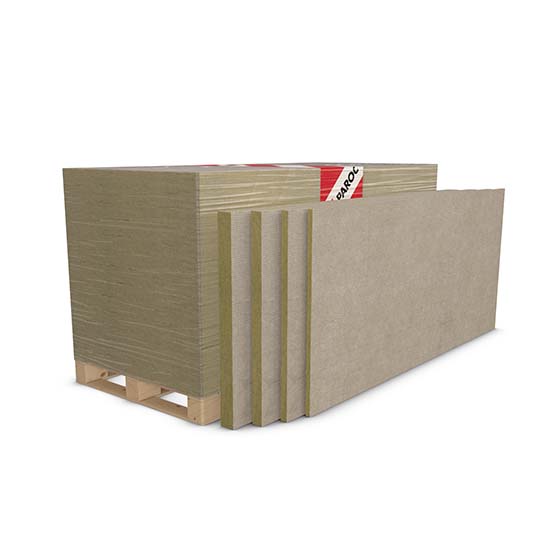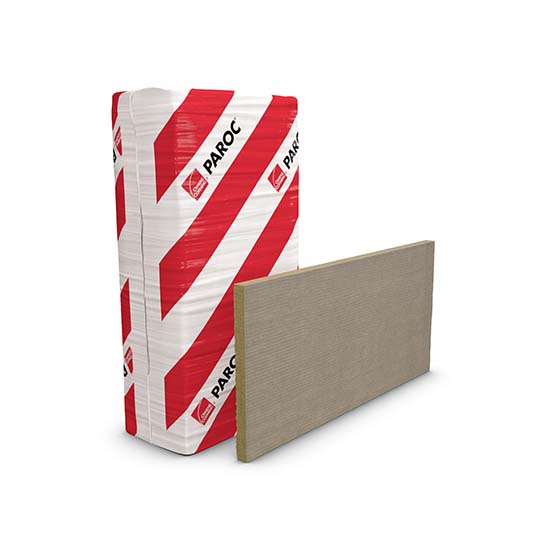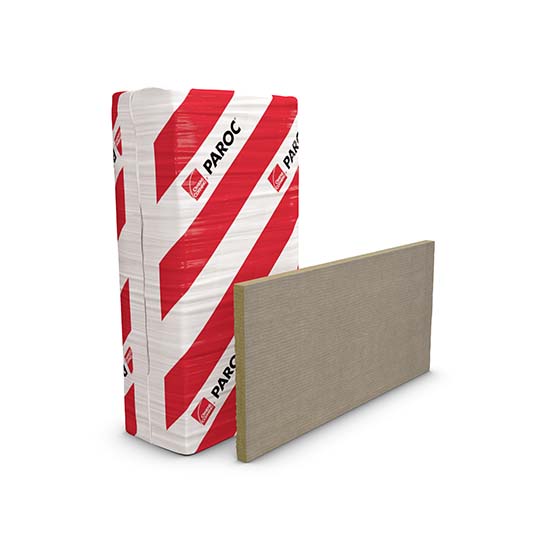

Wall slab PAROC WAS 25t is non-combustible stone wool insulation for existing and new ventilated external walls. The wall insulation slab is used as an external layer of two layer-systems in combination with another low-density thermal insulation layer. With a two-layer system it is easy to create a continuous thermal insulation layer with staggered joints to improve the thermal performance of the wall. The wall slab is faced with natural coloured glass fibre tissue.

